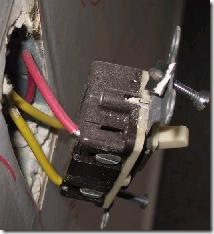A friend recently had to replace some electrical outlets in her house because they stopped functioning. There was so much corrosion built up between the aluminum wiring and the outlet contacts that the outlets quit working (which is much better than the alternative - catching on fire). 
Did you say aluminum wiring?
During the classic rock era of the 1960s and 70s, aluminum wiring became a popular replacement for copper wiring in the USA. Due to a copper shortage, aluminum was cheaper than copper and allowed electrical contractors to lower construction costs. I was quite shocked to hear about aluminum wiring in her home, I’ve only seen copper myself, but according to the CPSC there were ~2 million homes with aluminum wiring by 1974.
Over the years, a number of problems with aluminum began to surface. Aluminum wiring is more brittle than copper, and much more likely to oxidize, corrode, and overheat. Aluminum wiring just isn’t as safe as copper wiring* and is now banned in the electrical codes of many jurisdictions. Aluminum wiring lives on in many houses, however, because it’s expensive to swap out a piece of embedded infrastructure like wiring.
Engineering is always about tradeoffs. But many times we start using a technology, tool, or methodology because it appears to save us time or money. It’s only later that we can see the problems clearly.
My question for you is:
What do you think is the “aluminum wiring” inside today’s software? What have we adopted recently that we’ll look back on in 3 years and say “ouch”.
Here are a few candidates to start the conversation (based on an informal poll of random developers I accosted):
* If you are replacing outlets with aluminum wiring coming in, please, please, please be sure to use an outlet made for aluminum. They are more expensive, and the young clerk at the store will try to sell you an outlet for copper wire, which can be a fire hazard.

 OdeToCode by K. Scott Allen
OdeToCode by K. Scott Allen